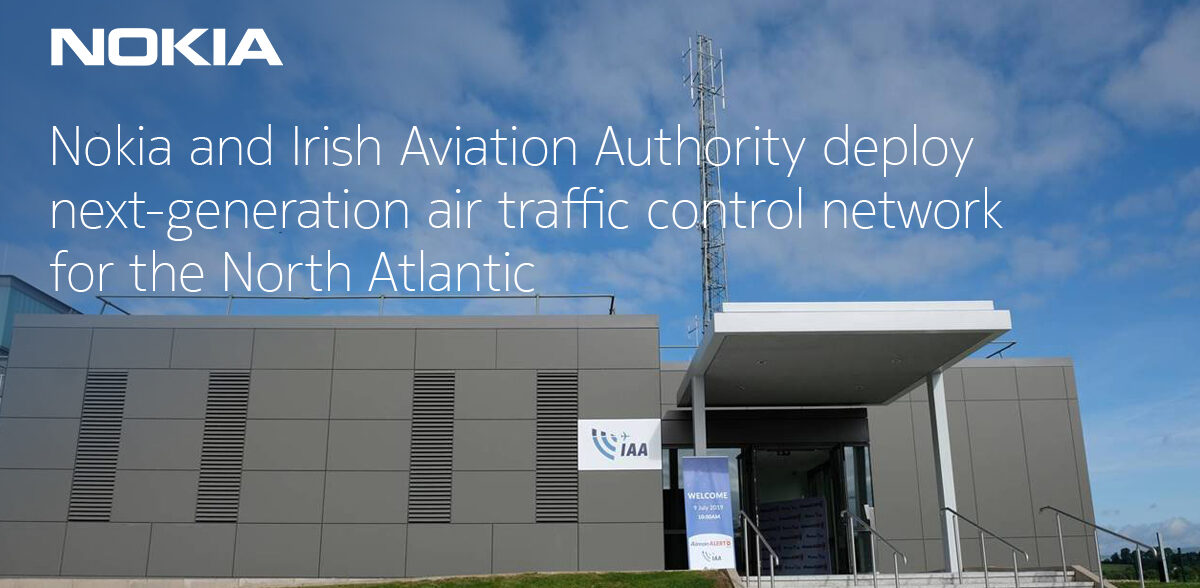As the aviation industry looks forward to a more promising, vaccine-enabled recovery, conversations will be redirected to some important agenda items that pre-existed the pandemic. Though the growth of passenger traffic, airport expansion, and increased passenger numbers may take a multi-year recovery, the industry has to continue to ensure measures will improve efficiency, enhance safety and ensure security.
Improvements to air traffic communications (ATC) is at the heart of this conversation. Across the aviation industry, there is a critical need for upgraded air navigation service provider (ANSP) communication networks as the current technologies reach their end-of-life. With much of the existing ATC equipment designed for voice, and not the latest IP-based applications, the transition calls for a seamless industry-wide migration to an IP network environment.
Transformation essentials
For our part, Nokia is working with a number of ANSPs to carry out this transformation. Based on this experience, there are lessons to be shared with the wider community as an industry shift takes place and we pave the way for the technology that follows.
In our work with the Irish Aviation Authority (IAA) – controller of the North Atlantic, one of the world’s busiest air traffic regions – Nokia is supporting their transformation by deploying a specialized aviation IP/MPLS (IP multi-protocol label switching) network at their West Ireland disaster recovery center.
This deployment is a key part of the IAA’s roadmap for migrating all of its critical services to a next-generation system. The new IAA IP/MPLS network has been used in a number of successful live trials, delivering essential voice and radar services to controllers across multiple North Atlantic airspace sectors.
When fully deployed, the network will increase existing data capacity throughput for ATC and aviation control systems. This will enable the IAA to ensure continued smooth and safe operation of aircraft movements throughout the North Atlantic airspace while paving the way for future, increasingly sophisticated ATC applications.
Legacy matters
As part of the transition to packet-based IP routing solutions for IAA, Nokia is managing the migration of legacy non-IP aviation applications to the new network. Perhaps unsurprisingly, the move to an IP/MPLS environment will not involve an instantaneous overnight switch over. Given the gradual transition process, a seamless migration of legacy applications is essential.
For example, while TDM (time-division multiplexing) network equipment and services are being discontinued, many deployed applications such as radar, VHF and emergency communications will remain for years to come. The smooth and effective migration of legacy TDM mission-critical applications to an IP/MPLS network requires a deep technical understanding of how TDM circuits are transported over IP/MPLS, in order to render the same level of performance as in the legacy network.
The ability to integrate legacy platforms will allow ANSPs to execute a full transition to the packet network while providing TDM continuity of service. This will ensure that all services meet critical requirements that include assured quality of service, high availability and resiliency, but with no performance compromise after migration.
Security
IP/MPLS transition will deliver other benefits across the ATC environment, in particular enabling ANSPs to evolve their network security operations. For example, IP/MPLS technology has tremendous potential to increase protection from cyberattacks. This may seem counter-intuitive, given the greater interconnectedness of IP/MPLS networks, which likely increases the attack surface for malicious actors. But in fact, IP/MPLS has built-in capabilities that counter and neutralize threats. The use of these security capabilities for providing the highest level of protection for air traffic communications will prove essential for ANSPs to comply with the recommendations of both ICAO and CANSO.
Overall, network solutions will need to provide end-to-end security with a defense-in-depth approach. This needs to be built on multiple layers of controls that include identity access management, audit compliance management and solutions for security orchestration, analytics and response. And in doing so, they take aviation network security to the next level – moving from manual and reactive, to automated and predictive.
4G and 5G potential
Over the near-term horizon, work is already underway on what will follow initial phases of ATC digital transformation. Working alongside Honeywell International and other consortium members on Project FACT (Future All Aviation CNS Technology), Nokia is assessing the potential of 4G and 5G for use in aviation. Initiated under the SESAR 2020 program, and managed by the Single European Sky ATM Research (SESAR) Joint Undertaking, this research and development program is evaluating how 4G and 5G could potentially be deployed to meet future, fast-growing spectrum needs of airspace users in varied operational environments.
With current mobile communications to the aircraft cockpit using limited bandwidth technology, there is a need for managing an effective transition to a more robust and scalable IP-based technology capable of handling high speeds with low latency. The project will research future deployment of a new, consistent technology platform for communication, navigation and surveillance (CNS) services across air traffic management.
Designed to increase safety, security, efficiency and resilience of future air traffic communications through the development of an integrated, next-generation CNS architecture, Project FACT seeks to maximize the benefits of high-bandwidth connectivity, which can handle fast-growing data volumes while also preserving utmost safety standards.
The project will deliver updates to existing CNS technologies, where it is anticipated that applications, such as controller-pilot datalink communications, can also be deployed over new and high-bandwidth mobile broadband technologies such as 5G. The project will also research potential integration of today’s conventional ATM systems with emerging U-Space services such as drones and other unmanned aerial vehicles.
So, though it might take some time for aviation to fully recover, there is much to address in the near-term, to ensure that the industry delivers an ambitious next generation of safe, secure and reliable generation of air traffic communications.



